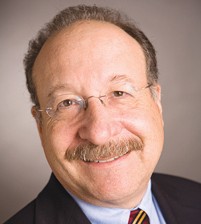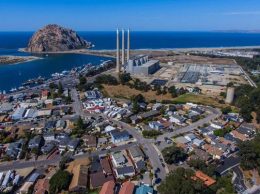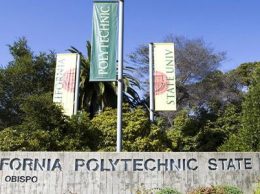
Henry Dubroff
Few people on the Central Coast took note of March 11 as the fifth anniversary of Japan’s 2011 Fukushima nuclear disaster.
But you can trace the June 21 announcement that PG&E won’t operate the Diablo Canyon nuclear plant near Avila Beach beyond 2025 to the earthquake and tsunami on the Japanese coast that destroyed four of five nuclear reactors and triggered massive evacuations.
Until that point, PG&E was on a fast track to seek relicensing of the twin reactors for another 30 years beyond their current limit. That plan was stopped dead in its tracks post-Fukushima, when the Nuclear Regulatory Commission ordered another seismic review.
During the delay, the discovery of an earthquake fault close to shore wasn’t the only change the giant utility faced. Indeed, the tectonic plates of energy production and environmental rules began to shift. California’s coastal regulators raised red flags about the release of warm seawater into the ocean — from both nuclear and conventional plants — and the long-term impact on fisheries.
Utility-scale solar fields and wind farms began to populate California, providing both the constant power production that Diablo Canyon’s 2 gigawatt station provides as well as additional power for peak daylight loads that renders extra base power redundant. Costs for wind and solar are so cheap now that it costs less to build them than conventional power plants. There’s no fuel to buy and, compared to nuclear, no radioactive waste.
As California shifted to a cap-and-trade system for carbon emissions, the newest mandates replaced the so-called “non-fossil fuels” standard which favored nuclear power and substituted a much narrower “renewable” standard.
In the end, it was cheaper and, given the Fukushima experience, far less risky for PG&E to shut and decommission Diablo Canyon than to keep it operating.
PG&E gets a giant tax write off, perhaps amounting to 54 cents or more on the dollar, it will take advantage of cheaper solar and wind power coming on stream and it can use marketing — with the full support of environmental groups — to reduce power consumption to offset demand.
By reaching an agreement now, it is likely to get much more favorable regulatory treatment for its massive decommissioning costs. Long-term storage of spent fuel remains an open question as does the future of the plant site.
San Luis Obispo County will have to remap its future and fight hard to get ratepayers to underwrite huge subsidies and the loss of 1,500 workers. But this is not the same San Luis Obispo County that welcomed the plant in the 1980s.
Land values from Santa Ynez to Paso Robles have skyrocketed as vineyards have replaced cattle grazing and software firms are starting to dot the landscape. The impact of wine grapes, agri-tourism and technology is profound and growing. The nuclear power station was looking more and more like a 20th century relic in an emerging 21st century economy.
Still, the transition will be enormous and several people I talked to in San Luis Obispo were in shock at the loss of jobs and support payments that go directly to local governments and schools.
San Luis Obispo clearly needs what I call a “MindBody moment” when it thinks about how it can align its future more closely with companies such as its superstar IPO software maker, and less with the nuclear energy station that defined its past.
Re-invention will take clever partnerships between industry and the tech savvy folks at Cal Poly San Luis Obispo, which has put innovation and entrepreneurship at the forefront of its vision. And more collaboration between Cal Poly’s engineers, Silicon Valley venture capitalists and the post-doctoral researchers at UC Santa Barbara.
One likely result is a growing disparity between gentrified professionals and working folks. The loss of 1,500 technical and high-skilled industrial jobs that might or might not require a college degree is going to carve a hole in the middle class of a county with just 250,000 residents.
Another is the transformation of California’s utility business.
Today, Southern California Edison is still tangling with regulators and consumer advocates over who will pay for the decommissioning of the San Onofre nuclear plant. Southern California Gas is trying to figure out how to regroup after a massive natural gas leak at Porter Ranch in Los Angeles County.
The folks at PG&E have had their own share of troubles. Just a year before Fukushima, a natural gas pipeline explosion in San Bruno killed eight people.
Right now the future of San Luis Obispo County’s economy looks uncertain at best and grim at worst. But with an unemployment rate that’s 3.5 percent, a growing reputation for innovation and eight years to sort things out, a few MindBody moments could turn things around.
• Reach Editor Henry Dubroff at hdubroff@pacbiztimes.com.






 Print
Print Email
Email


















SLO county won’t be having too many more MindBody moments. The ecosystem here has a taste for small tourist related business and most anything else is dead on arrival. Someone looking for capital and talent is 3 hours too far south.
I’m afraid its going to get ugly in parts. Grover Beach for example already looks like the back gate of a military base.
Well, Fukushima refocused our attention to the fact that nuclear power is dead. It committed suicide long ago, only to be propped up in its casket by the NRC and those few investors that thought they could milk governments as efficiently as the Military Industrial Complex does. Wall Street spoke long ago. Without government subsidies aka Price-Anderson liability limits and loan guarantees, they won’t touch it. Not only that we the tax payers get to pay for their national security and waste disposal, assuming that is physically possible. Asking compounds to secure elelmets is entropy upside down
Brilliant! Thank you, Dr. Cannara.
Editor Henry Dubroff, your response please?
Fukushima doomed Diablo Canyon because a) the public is grossly misinformed about nuclear power, and b) anti-nuclear activists took advantage of this situation (which they’ve largely created) to convince the public that it could happen here.
It can’t. The tectonic structure is completely different, and even if there were a tsunami of the same height (there wouldn’t be) Diablo’s backup generators are 87 feet above sea level.
For claiming to be an “editor”, Mr. Dubroff evidences an odd lack of preparatory research on this topic.
Fukushima, as an ‘inconvenient truth’ for anti-nuclear factions, illustrates the superior safety of regulated nuclear power, not danger.
Where was Dubroff when even Robert Reich wrote in 2011 about TEPCO’s build policy of doing Fukushima Dai-Ichi “on the cheap” because of lax regulation?
And, despite all 40+ Japanese reactors shutting down properly upon 11 March 2011’s record quake, the fact that TEPCO was allowed by their government to remove 25 meters of natural elevation from the future plant’s site to save money also seems to have been missed by Dubroff’s ‘thoroughness’… http://tinyurl.com/o852xg5
Not only did the Onagawa plant illustrate how proper design/regulation works, it served to house hundreds of tsunami refugees made such by their own government’s poor land-use policy. Dubroff didn’t discover the “tsunami memorial stones” all over the region? The 17 October 2011 New Yorker did!
In a study presented by Nobellist Richter in 2013, Fukushima Dai-Ichi, saved thousands of Japanese lives over its own lifetime, by its elimination of combustion pollution. That, of course, was undone by a panicked response to the Fukushima failure, which had been predicted years earlier and left without properly-enforced regulatory demands.
Since no one was killed by radiation from Fukushima, but >18,000 were drowned by government land-use policy, perhaps Dubroff might research an article on what truly was dangerous on 11 March 2011? It’ll lack the scare factor of “nuclear”, of course.
So we see, in Pacific Coast Business Times, yet another intentionally misleading publication.
Perhaps Dubroff will write that the reality that Diablo Canyon’s status has little to do with nuclear/environmental reality, and more to do with the effect of harassment by combustion-supported groups like ANR, FoE, NRDC, etc? Would require some detailed research though., for a change. Free hint: start by studying the effect of ENRON & the Bush/Cheney 2005 repeal of the 1935 PUHCA, which protected customers from predatory holding-company practices, as were used to shut San Onofre and increase gas sales & customer bills for generation by Sempra, SoCal Gas and Edison International.
Now that would be a useful article, energywise and environmentwise.
Bottom line, California’s capture by the gas industry means that our Governor’s emissions targets will not be met as long as if Diablo Canyon and San Onofre aren’t in full operation. The reason is simple — our feckless regulatiors: CPUC, DOGGR & CEC allowed not only the Aliso Canyon’s record US gas leak to emit the equivalent of igniting >3 billion gallons of gasoline/diesel fuels, it was only 1/4 the allowed ‘normal’ annual Calif. methane leakage.
Aliso wiped out all the benefits of all Calif. wind/solar deployments ever built, and we overwhelm that by a factor of about 4 yearly. To say California ain’t ‘green’ is an understatement.
—
Dr. A. Cannara
650 400 3071
Some refs…
http://www.nirs.org/fukushima/naiic_report.pdf (2012 Fukushima report)
http://www.unis.unvienna.org/unis/en/pressrels/2013/unisinf475.html (UN report)
AAAS Science, Vol 340, p678, 10 May 2013
http://www.theregister.co.uk/2013/08/21/omg_new_crisis_disaster_at_fukushima_oh_wait_its_nothing_again/
http://www.meti.go.jp/english/earthquake/nuclear/demissioning/pdf/20140327-e.pdf (excellent 2014 status report)
http://www.nature.com/srep/2015/150312/srep09016/full/srep09016.html#/introduction (2015 Pacific fish)
http://www.fukushimaminponews.com/news.html?id=629 (UNSCEAR 2016)
http://www-pub.iaea.org/MTCD/Publications/PDF/Pub1710-ReportByTheDG-Web.pdf (IAEA report)